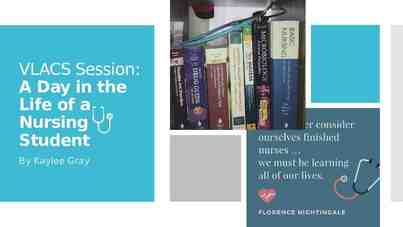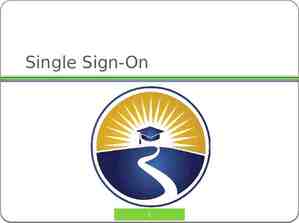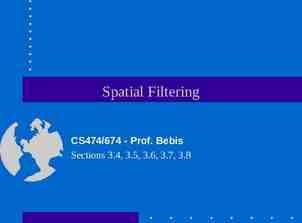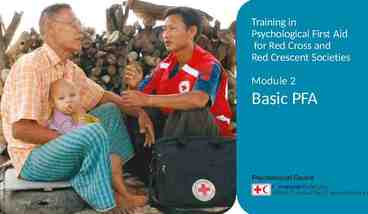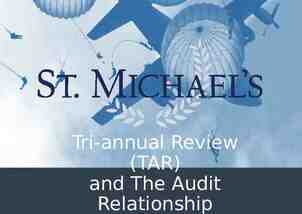An Update on the World Trade Center Health Registry:
31 Slides1.62 MB

An Update on the World Trade Center Health Registry: Post-Enrollment Activities Lorna Thorpe, Ph.D. Deputy Commissioner of Health, Division of Epidemiology, NYC DOHMH Eleventh Meeting of the WTC Expert Technical Review Panel July 12, 2005

Recap: What is the Word Trade Center Health Registry?

World Trade Center Attack on September 11, 2001 Hundreds of thousands of people were exposed to: the dust and debris cloud witnessing traumatic events the indoor dust the fumes from persistent fires

The World Trade Center Health Registry (WTCHR) The WTCHR was conceived as an imperative public health response to document and evaluate the impact of the disaster on a large and diverse population A collaborative scientific effort between NYC DOHMH and ATSDR Initial funding provided by FEMA, ATSDR and NYC DOHMH (funding for out years is not yet secured) Enrollment from September 5, 2003 – November 20, 2004 Input from external scientific, community and labor advisors Largest health registry in U.S. history (over 71,000 enrollees)

Role of Health Registries Create a roster of affected individuals - an “address book” – as a critical resource to be used for related research over time Track and investigate illnesses resulting from disasters and exposures Inform the public and medical sector of findings Create guidelines for preparedness and reduce possible injuries from future events Examples: Three Mile Island Registry (1979); Oklahoma City Bombing Registry (1995); Tremolite Asbestos Registry

World Trade Center Health Registry (WTCHR) Objectives To provide a means for long-term follow-up (20 years) of highly exposed persons To help document and evaluate the public health impact of the disaster on directly affected populations To ascertain short- and long-term physical and mental health effects associated with a wide range of exposures To facilitate specific follow-up studies and identify subgroups in need of in-depth study To identify public health needs (gaps) among registrants and the larger population of persons exposed to the WTC disaster

Post-Enrollment Overview

Enrollment * Approximately 25% of enrollees are in more than one exposure category; the sum of the percentages is thus greater than 100%. Graph represents completed live interviews.

Preliminary Health Findings** **Of first 60,000 registrants More than half adult enrollees (54%) reported new or worsened respiratory health symptoms following 9/11/2001: Sinus problems/nose irritation/post nasal irritation (47%) Shortness of breath (42%) Wheezing (38%) Throat irritation (38%) Persistent cough (37%) At the time of the interview, adult enrollees reported higher rates of psychological distress than the citywide average: WTCHR enrollees (8%) 2003 NYC Community Health Survey (5%)

Publication of Preliminary Health Findings

Post-Enrollment Activities Data preparation and analysis Building productive long-term relationships with advisory groups Updating enrollee contact information Establishing a mechanism to review external research requests Preparing a long-term follow-up strategy Developing a follow-up questionnaire for early 2006 survey

Post-Enrollment Activities (continued) Creating a public use dataset (de-identified data) Providing general information to enrollees and the public Responding to individual queries from enrollees Developing treatment-related resources

Data cleaning and analysis Data preparation/recoding Key analysis and papers in preparation Surveillance for injuries and physical health effects among WTC tower survivors (and survivors of damaged buildings) Prevalence of probable PTSD among residents Prevalence of probable PTSD among WTC tower survivors Asthma and mental health distress among children

Building productive long-term relationships with advisory groups Community Advisory Board (CAB) Labor Advisory Committee (LAC) Scientific Advisory Committee (SAC)

Community Advisory Board (CAB) Successes 10/04: Timely dissemination of WTCHR results Ongoing 1/05: Improved sensitivity to concerns of non-English speaking registrants, such as non-endorsing cover letter (in English, Spanish and Chinese) in any external study solicitation packets sent to enrollees Done 1/05: Expanded mental health questions in follow up. Done (final version pending) 4/05: Advertise opportunities for research using WTCHR. CAB members stressed that many enrollees want to participate in future studies. Pending (July/August) 4/05: Send health promotion materials to enrollees. Ongoing

Labor Advisory Committee (LAC) Successes 12/04: Added counts of enrollees by multiple eligibility categories and by uniformed services to quarterly report. Done 3/05: Added additional LAC representation on external review committee. Done. 3/05: Increased construction union representation in LAC. Assistance offered by LAC. Pending 6/05: Expanded follow-up survey to include office worker cleaning exposure. Pending (Planned for FU survey) 6/05: Distributed a lay person’s abstract of external research proposals to all LAC members not just the Review Committee representative. Done

Scientific Advisory Committee (SAC) Successes 12/04: Made Quarterly Reports more informative for external researchers and enrollees. Done 3/05: Changed scoring of external proposals, giving increased weight if researchers demonstrate labor and community support. Done 3/05: Send internal DOHMH proposals also to the Review Committee. Done 6/05: Expanded follow-up survey to add questions on health utilization, health insurance, changes in family and economic stability since 9/11, loss of loved ones on 9/11. Pending (Planned for FU survey) 6/05: SAC member reports a very high response rate of completed surveys to first external research mailing to enrollees (tower survivors).

Updating enrollee contact information Annual letter sent to all 71,000 enrollees in Jan 2005 Prior estimates suggest that at least 5% may move per year (n 3550) 2,600 enrollees returned enclosed postcard with updated info Updated information received from post office (n 100) WTCHR website Update Contact Information page Enrollees (n 1,500 provided updated information to date) Updates received directly from enrollees (calls, emails) (n 300) Mass emails sent to all enrollees who provided email addresses (n 44,000) - quarterly reminders to update contact information

Establishing mechanism to review external research requests Most enrollees (91%) provided consent at baseline to receive information about external studies Developed Guidelines for External Researchers Researcher submits proposal with request for: De-identified baseline data or DOHMH to send information about their study to selected WTCHR enrollees Proposals limited to medical, public health or other scientific research WTCHR Review Committee 7 members (representatives from CAB,LAC,SAC, ATSDR & DOHMH) Applications reviewed and scored for scientific value and the expected contribution to study participants and the community

Preparing a long term follow-up strategy Based on experiences shared by investigators from large successful health registries, DOHMH has developed the following plan: Participant Tracing: Search national mailing, telephone and other electronic databases to obtain up-to-date contact info Follow-up: Administer brief health surveys (every 2 years) to track physical and mental health status and identify subgroups for focused studies Regular Feedback and Outreach: Distribute newsletters, annual cards and emails to inform enrollees and sustain interest Promotion of Registry Access: Increasing the number of external scientific proposals and providing administrative support for approved external studies

Developing the first follow-up survey Develop draft questionnaire Distribute draft questionnaire to WTCHR advisory groups for review and feedback SAC: June, 2005 LAC: June, 2005 CAB: July, 2005 Revise questionnaire Data collection: Beginning in early 2006 (6 month period)

Highlights from the first follow-up survey Draft questionnaire includes the following topics: general health physical health symptoms and conditions alcohol and tobacco use mental health status and social support additional questions on dust cloud exposure union membership health utilization practices Two additional modules: Residents: cleaning questions Occupants of buildings: evacuation and clean up questions

Creating a public use dataset A tool for the public and external researchers De-identified data (to protect confidentiality) Early version will permit simple queries by users (e.g. frequencies of health symptoms/conditions by zip codes) Queries will run live against the public use dataset To be released on WTCHR website in early 2006 Downloadable dataset and resources will be available later

Providing information to enrollees and the public WTCHR Website Quarterly Newsletters (n 7 to date) Nov 2004: preliminary health effects Jan 2005: final enrollment characteristics May 2005: new newsletter format Resource Guide Press Releases E-mail health promotional material (flu shots, how to find a doctor, preventing childhood lead poisoning, etc.)

Developing treatment-related resources Updated resource guide Just released, June 2005 Includes updated information on resources (n 53) in the tri-state area for people affected by 9/11: occupational, respiratory and mental health facilities environmental cleaning scholarships other health services Physician guidelines To be released in Fall 2005 Will include suggestions for physicians providing care to people affected by the events of 9/11

Responding to individual queries from enrollees Is my health problem related to 9/11? (n 500) Where can I go for medical treatment or for help with mental health issues? (n 325) Where can I obtain assistance (e.g., disability, unemployment, health insurance, financial)? (n 50) I’ve encountered problems applying for assistance (e.g. NYS workers compensation, Red Cross). (n 15)

Future plans Secure long-term funding for WTCHR Maintain long-term relationship with enrollees to sustain interest, reflect needs, and keep up-to-date contact Expand WTCHR research at DOHMH and by external researchers

Limitations of WTCHR Not all affected groups were eligible for enrollment Baseline survey had several limitations: Included only self-reported health conditions, no screening Pre-9/11 mental health history not obtained Severity of current physical symptoms not assessed Health utilization questions not included Union memberships not obtained Additional detail on dust cloud exposure and resident/office cleaning needed Routine follow up surveys will likely be based on self-report

Strengths of WTCHR A large, defined population of affected individuals with diverse exposures has been established Many enrollees (30%) were recruited from lists with known denominators, reducing selection bias and allowing for estimates of population impact. Routine assessments of all enrollees will be obtained, through self-report surveys and data matches WTCHR is a roster of individuals from which subgroups may be reached for in-depth, specialized studies WTCHR is accessible to external researchers via review process

Contact information World Trade Center Health Registry (WTCHR): www.wtcregistry.org email: [email protected] Telephone: 212-442-1585 NYC Department of Health and Mental Hygiene (NYC DOHMH): http://nyc.gov/health Agency for Toxic Substances and Disease Registry (ATSDR): www.atsdr.cdc.gov


